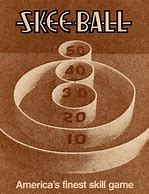In my last post, I made the case that basketball has quickly become a game of dunks, layups, and three point attempts. The reason? Dunks and layups have the highest percentage of success for two point attempts, and players have become increasingly more effective at converting more than 33% of 3-pointers.
Much like in other aspects of life, basketball players have evolved their game toward obtaining the highest rewards for their efforts.
Take a look at the Houston Rockets’ MVP, James Harden. He is the new prototype NBA player. At 6’6″, Harden is both a gifted ball handler and has evolved into a dynamic three point shooting specialist. Harden gets to the basket with ease to convert the easiest two point attempts while his fancy footwork often allows him to step back into a 3-pointer, too.
Harden’s offensive arsenal reminds me of two other NBA all-time greats. Pistol Pete Maravich and George “Ice Man” Gervin also could put the ball in from long range (even before the three point line) or attack the basket with ease. Great scorers do that.
In today’s basketball (all levels), players have all but forgotten practicing shooting the ball from inside of the three point line as they seek to maximize the rewards. Some call this “analytics”.
I call it basic math.
It is sad that basketball is quickly losing the art of seeing an effective 15-foot bank shot (Tim Duncan is the last of that breed) or an artful hook shot (Kareem Abdul Jabbar’s sky hook should be in every center’s arsenal).
How does basketball encourage players to start utilizing more of the court in order to produce points?
Here are a few ideas:
1. Limit use of the three point line to only the final three minutes of a quarter (or half).
With this concept, players would work to find the best shot at the closest point to the basket before the shot clock expires. It would encourage more of an emphasis on the game’s big men again. Shots attempted closer to the basket would result in rebounds closer to the basket, too. Basketball’s centers would take on increased significance. By introducing the three point shot near the end of a quarter, long distance attempts would bring a higher risk/reward for players and serve to pique fans’ interest to fuel a rally. On the negative side, it would disrupt the flow of the game and require more administrative oversight.
2. Move the three point line further back.
High schools and colleges could move the line back to the NBA’s current 22-feet distance. The NBA could push their line back another foot, but the players would be dangerously close to being out-of-bounds on sidelines attempts, too. Three point shooting percentages would drop slightly, but probably not enough to significantly discourage players from attempting them.
3. Widen the court for the NBA and move the 3-point line to 25 feet.
The players are bigger and faster these days, and the court does look a little crowded. But increasing the size of the court could cause a loss of revenue from those pricey court$ide $eats. This doesn’t sound feasible.
4. Move the 3-point line to 23 feet and make dunks and layups only count for only 1 point.
My departed Dad had this idea 25 years ago. It is much like the game of skee-ball. Points are increased the further you are away from the basket. The rewards increase for shots which require more shooting skills. How would you do this?
This change makes additional use of the current semi-circle located 4 feet away from the basket (also called the “restricted line“). This line is currently used to protect shooters from being called for offensive fouls once they are near the rim.
Under this change, if the player releases the basketball within the restricted area, then the basket would only count for one point. Any made basket outside of the restricted area would be counted as two points. And, if you can convert a 23 footer, you would earn three points.
Players would have to make a decision before dunking the ball or dribbling all the way to the hoop. Fans of the dunk would hate this change, but how much shooting skill does a dunk really take?
Don’t ask me, because I’m still 0-for-lifetime on dunks!

